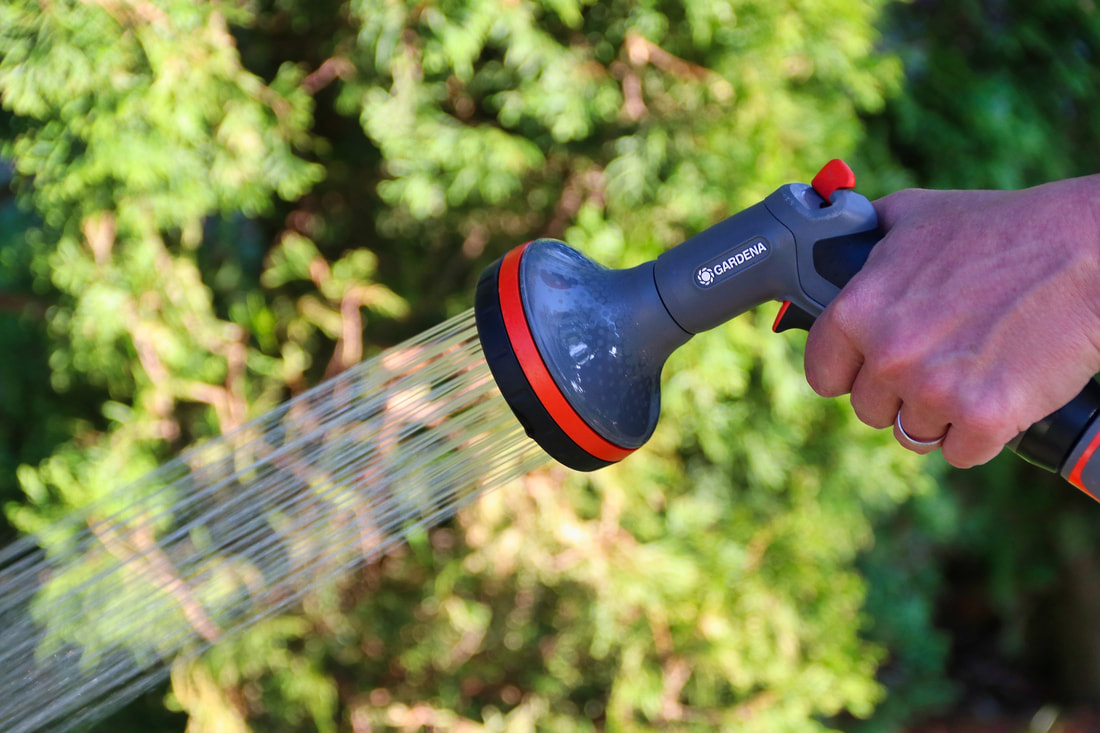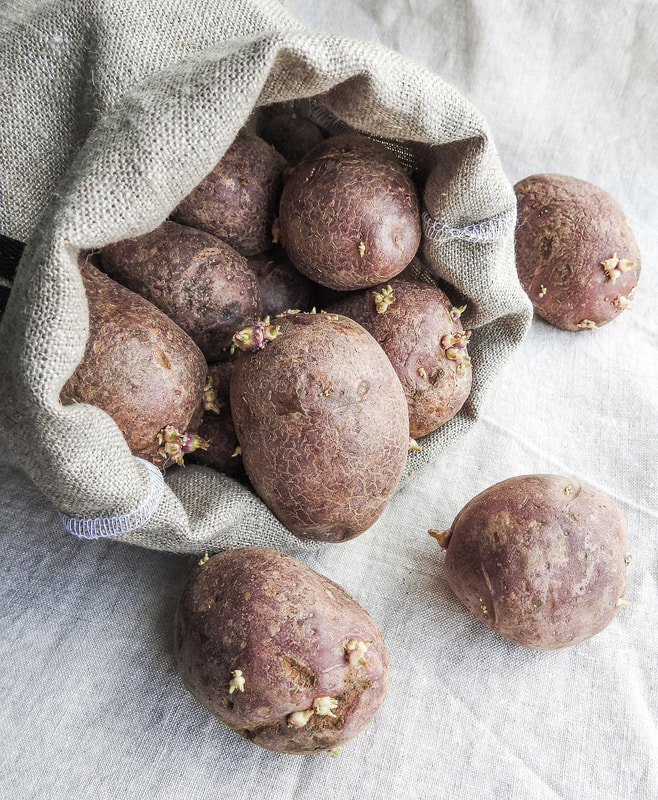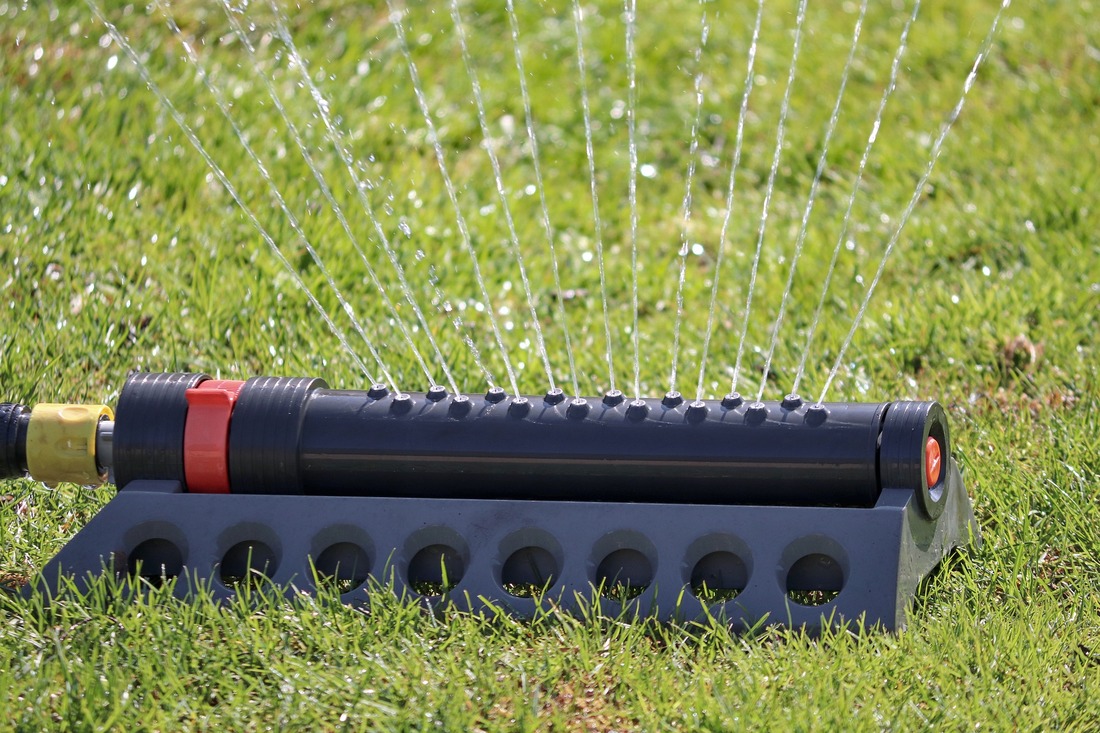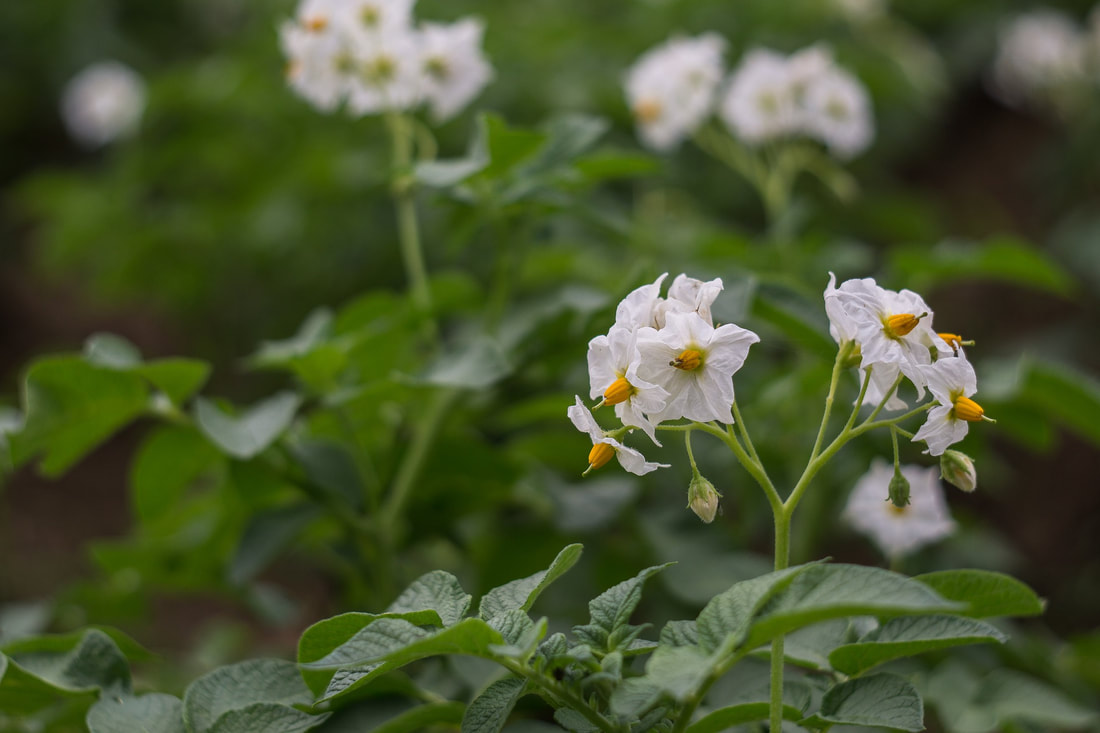How to Grow Potatoes in Hay or Straw Bales
Growing potatoes in hay or straw bales is a great option for those with limited space or whose soil is unsuitable for growing. It is clean and easy and doesn't require tilling the soil, but the best part is the ability to harvest tender new potatoes as soon as they 'set on' without disturbing the roots of the plants.
Many sources caution against using hay bales and recommend straw bales instead. In theory, hay bales contain seeds that may sprout and grow with your potatoes, while straw bales are seed free.
I used hay bales for several years for growing my potatoes and weeds were not an issue. Granted I had to pull a few weeds here and there, but it really wasn't a big deal.
If you have access to straw bales, they may be a better choice, but if you live in an area where hay bales are more accessible, go ahead and give them a try.
Many sources caution against using hay bales and recommend straw bales instead. In theory, hay bales contain seeds that may sprout and grow with your potatoes, while straw bales are seed free.
I used hay bales for several years for growing my potatoes and weeds were not an issue. Granted I had to pull a few weeds here and there, but it really wasn't a big deal.
If you have access to straw bales, they may be a better choice, but if you live in an area where hay bales are more accessible, go ahead and give them a try.
Where should you put the haybales?
- Place your haybales in a location that receives full sun for at least 6 to 8 hours a day. The number of hours does not need to be consecutive. A few hours in the morning with shade during the middle of the day and another few hours of direct sunlight in the afternoon works fine, too.
- Place the hay bale on soil, grass or even on paved areas as it does not rely on soil for growing. Water does run through the bottom of the bales during watering so choose a location where runoff will not cause a problem.
- Place the bales in a location that is close to a water supply or is easily accessed with the hose.
How do you prepare the hay bales for planting?
- Day 1-3
- Days 4 -6
Evenly spread 1-cup of bone meal over the top of the hay bales. Water the bale thoroughly and allow it to sit in the sun. Repeat the same procedure for days 5 and 6.
- Days 7-9
Reduce the amount of bonemeal to 1/2 cup for the next 3 days and water as usual. Allow the bales to sit in the sun.
- Day 10
Sprinkle the tops of the bales with 1/2 to 1 cup of 10-10-10 fertilizer and water them thoroughly. Allow the bales to sit in the sun for another day.
Are the hay bales ready yet?
Your prep work up until now should have caused the inside of the haybales to begin to decompose and create compost for growing your potatoes. But you won't know if they are ready for planting without checking them.
Pull back the layers of the haybale to make a hole large enough for your hand. Reach inside the hay bale to check the temperature. It should feel warm, but not hot.
The center of the hay bales heat up during the decomposition process, but should have cooled down by day 10.
If the inside of the bale still feels hot, allow it to cool for another day or two before planting your potatoes.
Pull back the layers of the haybale to make a hole large enough for your hand. Reach inside the hay bale to check the temperature. It should feel warm, but not hot.
The center of the hay bales heat up during the decomposition process, but should have cooled down by day 10.
If the inside of the bale still feels hot, allow it to cool for another day or two before planting your potatoes.
How do you plant the potatoes in the hay bale?
Planting your potatoes in the hay bale is easy.
- Cut the potato into two or more sections with at least two eyes on each section. If your potatoes already have sprouts, try not to remove them.
- Place the cut potatoes into the hay bale to a depth of 4 to 6 inches spaced 6 to 12 inches apart. Typically four potato plants fit in one hay bale.
- Close the opening by moving the hay back in place.
How do you water potatoes in hay bales?
Potatoes grown in hay bales do require frequent and consistent watering. The bale must be soaked every day and the center cannot be allowed to dry out. You can accomplish this in several ways.
- Water your hay bales every morning with the sprayer on your garden hose using care to saturate the entire bale. Water until water runs freely through the bottom of the bale.
- Place a soaker hose along the top of the hay bales and allow it to work it's magic.
- Drill or poke tiny holes around the bottom perimeter of a gallon milk jugs. Fill the jug with water and place it beside the potato plant so the water can drip slowly and saturate the bales.
- Use a garden sprinkler to soak your hay bales.
Do potatoes grown in hay bales need fertilizing?
Your potatoes do need to be fertilized regularly. Use water-soluble fertilizer (like Miracle-Gro) once a week. Spray the foliage and allow the excess to seep into the hay bale. Your potato plants will absorb nutrients through the leaves as well as the roots.
When do you harvest potatoes in hay bales?
You can begin harvesting tiny 'new potatoes' as shortly after the potato plants bloom. Gently separate the haybale with you hands and remove the baby potatoes while leaving the smallest potatoes to grow.
Harvest mature potatoes in the fall after the foliage has turned yellow and died.





